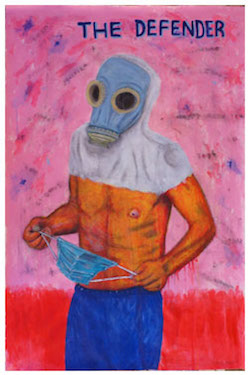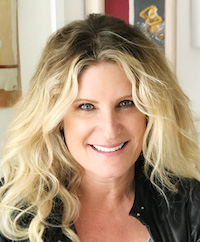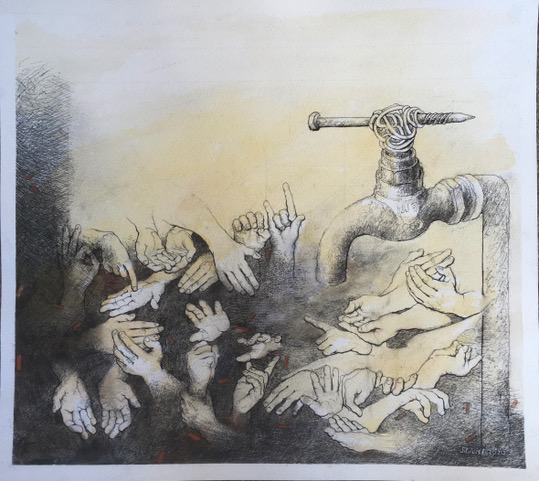It’s impossible. What we as individuals, communities, countries and the world are experiencing at the moment is something that many thought impossible, or at least improbable, in their lifetimes.
A global pandemic with no vaccine or cure. I think the world is still in shock at what has transpired in just a few short months. The pandemic has also exposed the world’s striking inequalities and injustices, and life as we knew it has been horrifyingly (but also, hopefully) changed, forever.
For me, the lockdown experience feels like a seesaw of emotions and observations. The amazing, good, bad and outright ugly. It has also challenged me to learn, relearn, and unlearn at record speed.
I’m already a fortunate mostly-remote worker, in the habit of laying my laptop on almost any surface, so that transition has felt fairly seamless. Moving beyond the odd virtual video call, to always-on -video-calls has meant a rapid transition to intuition-based tools and tech designed to maximise efficiency – and this has pushed me a little further. Multiple monitors set up for maximising VCs, WhatsApp and Gmail was a newer thing – not to mention moderating study-from-home teen scholars! All challenging, but possible.
But what happened just a few days into the South African lockdown was, in my mind, almost impossible.
How crazy ideas become real
With no in-person meet and greet; with no multiple ideation sessions; with not a paper, pen or physical person in plain sight…a big, hairy and damn audacious idea surfaced, was approved and in action – all in the 48 hours before South Africa’s stringent lockdown.
How is that even possible?

Introduce three fairly unlikely and loosely connected bedfellows: A business leader in corporate governance, a university art professor and a brand marketer (that’s me!).
We connected via a WhatsApp voice-note and two phone-calls, and voila! We had conceptualised and launched The Lockdown Collection, a fundraising art collection, telling the story of the first 21 days of the lockdown, through the eyes of some of South Africa’s best visual artists.
The plan was to auction the 21 artworks, with the proceeds apportioned to the President’s Solidarity Fund and to a new fund created by us, called the Vulnerable Visual Artist Fund.
This campaign, born of a mere kernel of an idea, raised over R2 million for vulnerable artists and South Africans in just over three weeks. The Lockdown Collection did it in style and on strategy. It continues to grow wings and fly and we have already launched the Lockdown Extension Collection – 21 more works to raise more funds for vulnerable artists. And soon thereafter, a Student Collection and an Open Call Collection will be launched.
Four catalysts for stupendous creativity
Through The Lockdown Collection, I have learned – or maybe relearned – how dramatically powerful passion, purpose, and crisis are in releasing a creative storm. These forces together, with a healthy dose of fear thrown into the mix, can drive big thinking and impactful execution at unprecedented speed.
Passion: I have a personal passion for art and for its social impact and role in building community. I have a particular passion for South African art and young, up-and-coming artists. The idea that these aspects of my passion could come together for good in this project was what made me jump in from the get-go and dedicate time and resource – especially knowing how so many artists would be in a vulnerable situation during the lockdown, and would need assistance.
Purpose: I am fuelled by a heart-felt purpose to help build creatives and creativity as I truly believe that creativity, in all its iterations, has the power to change and improve the world for good. Everyone who has worked on The Lockdown Collection – from the founders, to the artists and the other volunteers who have joined us – have shared this sense of purpose. I believe it’s what truly fired up the campaign.
Crisis: Crises drive urgency. The Lockdown Collection founders – and the artists and volunteers that joined them – decided to collectively turn uncertainty into hope and positive outputs for those whom the crisis would most profoundly effect.
Fear: Fear can be paralysing but it can also fuel action. It all depends on your response. The fear of what might happen to our visual artists, should they be completely without buyers was palpable as was everyone’s real concern about the virus physically reaching them or their loved ones.
I am an evangelist for creativity and the power of ideas for change. I believe that creativity creates and drives exponential value for business. In the case of The Lockdown Collection, not only was art the subject matter of our drive, but design, as well as creative communication and marketing, was the commercial push.
I hope that, in taking on this initiative, the design and brand strategy consultancy, MRS WOOLF, which was started to support creative enterprise, has proved that using creativity to leverage ideas and brands, has the power to attract attention.
In these unprecedented times, even I could not have anticipated the creativity that Covid-19 has unleashed. I have no doubt that creativity, a creative approach to problem solving as well as creative leadership will be instrumental in finding the cure we so desperately seek.
Impossible is nothing.


Lauren Woolf, founder and owner of MRS WOOLF, as well as TCLA (The Creative Leadership Academy), has a career in advertising and marketing that spans over 20 years, most of which were spent in leadership roles. With a passion for creativity from artist to agency, Woolf’s mission is to support companies and creative individuals and innovators of all kinds, ensuring that they thrive and survive through the complexity of today and tomorrow’s business environment.














